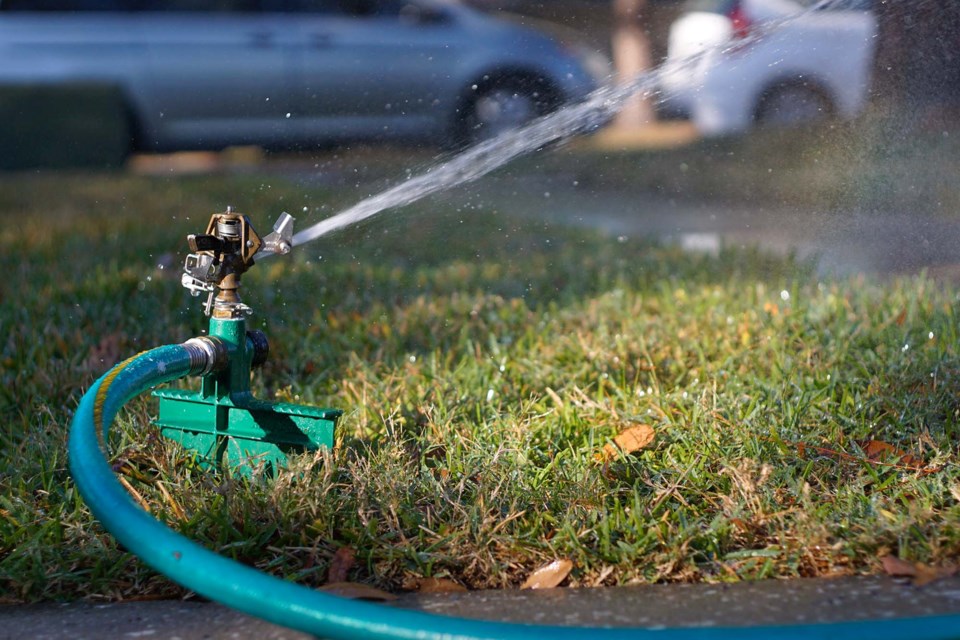Reservoirs reached critically low levels in St. Albert during the heat wave that swept western North America earlier in July.
Olivia Kwok, the city’s acting director of utilities and environment, said the reservoirs — which are designed to store enough water for regular city use in addition to enough for fire protection — reached their low heat-wave levels due to a surge in water use.
“You can imagine residents were running the sprinkler for their kids, or washing their cars, or doing regular household activities,” Kwok said.
The average water demand in St. Albert is about 220 litres per capita per day, said city spokesperson Cory Sinclair in an email to The Gazette. At peak times during the heat wave, the water consumption was more than 750 litres per capita per day, enough water to fill 20 Olympic-sized swimming pools.
St. Albert has a water conservation bylaw that was established in 2015. Under this bylaw, watering with a sprinkler is permitted only between the hours of 7 p.m. to 9 a.m. from May 1 to Oct. 1 each year. Recreational sprinkler use, however, is typically permitted at any time.
Kwok said during the heat wave, the city implemented additional measures by holding off on all non-essential in-city operational water use, such as washing the fleet of city vehicles, street sweeping, and firefighter training.
Residents were also encouraged by city announcements to use water “efficiently,” and delay activities such as car washing until the heat levels subsided. The messages were relayed on digital messaging boards throughout the city as well as via social media.
Percy Janke, the city’s director of emergency management, said heat warnings from Environment Canada were also an important “public notification” mechanism. For all areas of Alberta except those closest to the southern border, Environment Canada issues warnings for extreme heat when temperatures reach 29 C for two or more days at a time, and nightly temperatures remain above 14 C.
Janke said during the heat wave, the city’s extreme temperature plan was activated, which includes instating cooling centres at Service Place and Fountain Park Pool, St. Albert Place, and the St. Albert Food Bank.
When asked about what kind of data the city collects about the impact of extreme heat on St. Albert residents, Janke said the city conducts an after-action review which determines areas for improvement in the city’s response.
“In terms of the broader details, like how often a cooling centre is used, we respect people’s privacy,” Janke said. “We know that facilities have been used, but we don’t collect exact numbers.”
Ultimately, Kwok said the city has seen compliance both as the city promotes its seasonal water conservation bylaw, and during instances of extreme heat.
“Overall, we do see residents participating and trying to help because they understand what's going on with the community and the water level usage,” Kwok said. “When the need for conservation escalates because of a heat wave, our residents do understand."
Reservoir volumes returned to full capacity about one week following the heat wave, when high water use subsided. Through Sinclair, the city said reservoir levels remain at full capacity today.




